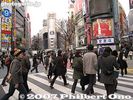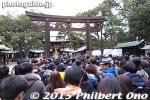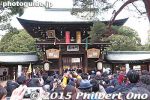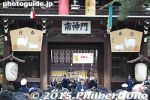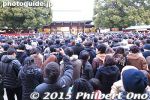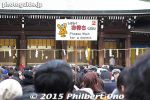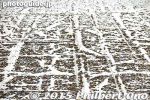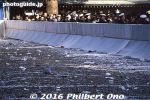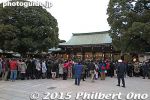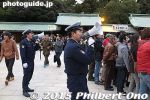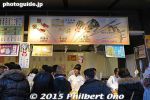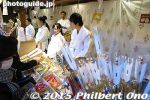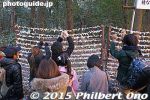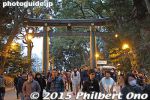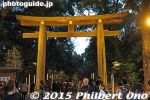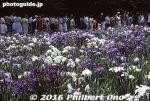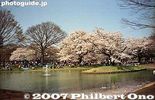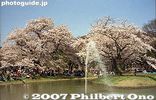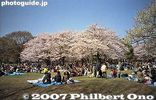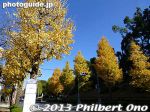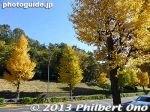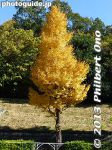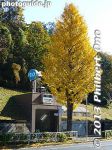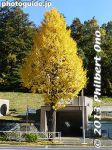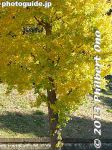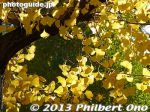 Image search results - "shibuya-ku" Image search results - "shibuya-ku" |
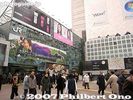
Shibuya Station, Hachiko Exit 渋谷駅 ハチ公口
|
|
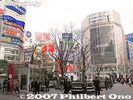
Shibuya Station, Hachiko Square
|
|
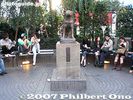
Shibuya Station, Hachiko statue
|
|

Shibuya Station, Hachiko statue
|
|
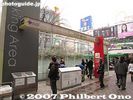
Shibuya Station, Hachiko Exit smoking area
|
|

Shibuya Station, Hachiko Exit smoking area
|
|
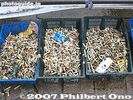
Shibuya Station, Hachiko Exit smoking area cigarette butts
|
|
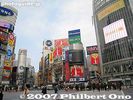
To Dogenzaka and Center-gai arcade
|
|
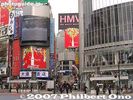
Center-gai arcade
|
|

Shibuya crossing
|
|
|
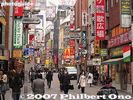
Center-gai arcade
|
|
|
|
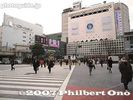
Shibuya Station
|
|
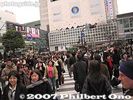
Shibuya crossing
|
|
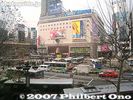
Shibuya Station, South Exit, Tokyu Plaza 渋谷駅南口
|
|

Popular meeting place at Shibuya Station, south exit.
|
|
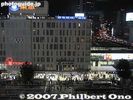
Shibuya Station, South Exit, as seen from Tokyu Plaza 渋谷駅南口
|
|
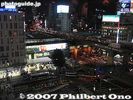
Shibuya Station, South Exit, as seen from Tokyu Plaza 渋谷駅南口
|
|

Meiji Shrine or Meiji Jingu is Tokyo largest and most important Shinto shrine. Dedicated to Emperor Meiji (1852–1912) and Empress Shoken (1849–1914). The most popular shrine during New Year's in Tokyo. It also holds a variety of seasonal events.
|
|

JR Harajuku Station on the Yamanote Line is the closest station to Meiji Jingu Shrine.
|
|

JR Harajuku Station
|
|

JR Harajuku Station will soon be replaced by a new building.
|
|

JR Harajuku Station on the Yamanote Line
|
|
|
|

Harajuku Station
|
|

Meiji Shrine is one of Tokyo's major sights. Cross the Bridge over the train tracks.
|
|

The torii gate for Meiji Shrine.
|
|

Meiji Shrine torii
|
|
|
|

Meiji Shrine is in a large wooded, park-like area. A wide walking path leads to the shrine. It can be dusty due to the gravel.
|
|

Meiji Shrine's forest was man-made, not natural.
|
|
|
|
|
|
|
|

Barrels of French wine offered to the Meiji Shrine because the Meiji Emperor liked wine.
|
|
|

Across the barrels of wine are barrels of sake rice wine.
|
|

Sake rice wine.
|
|

Turn left and see another torii.
|
|

Go left.
|
|

Second torii
|
|
|

Along here, you may see some outdoor panel displays.
|
|
|
|
|
|
|

Where you wash/purify yourself. Temizuya
|
|

Where you wash/purify yourself. Temizuya
|
|
|

Last torii before the main shrine.
|
|

Shrine shop for talisman.
|
|

Shinmon Gate 神門
|
|
|

Main shrine hall ahead.
|
|
|

Meiji Shrine's main worship hall. If you look closely at the wooden pillars, you can see numerous little cuts in the wood made by people throwing coins at the shrine during New Year's.
|
|
|

The main worship hall is flanked by these two large trees.
|
|

The left tree is actually a couple.
|
|

Two wedded tree trunks (楠) coupled by a sacred rope at Meiji Shrine.
|
|

The right tree provides shade for many ema prayer tablets.
|
|

Ema prayer tablets.
|
|

You can buy a prayer tablet and write your wish/hope/prayer on it and hang it here.
|
|
|
|
|

Meiji Shrine is also popular for holding weddings. On weekends, you can see several couples passing through.
|
|

At Meiji Shrine, a wedding couple is led by a Shinto priests and two shrine maidens.
|
|
|
|
|
|
|
|
|
|
|
|
|
|
|
|
|
|
|

Shrine maidens (miko)
|
|

Wedding couple on their way to their ceremony inside the shrine.
|
|

Wedding couple on their way to their ceremony inside the shrine with the wedded trees in the foreground.
|
|
|
|
|
|

Chrysanthemum crest is the symbol of the Imperial family.
|
|
|
|
|
|
|
|
|
|
|

Amulets, charms, talisman
|
|
|
|
|

On the left, there is a gate where you can exit and go to the shrine's park area.
|
|

Path to the park area.
|
|
|
|
|

Entrance to Treasure Museum.
|
|
|
|
|
|
|

Shiseikan Dojo (Martial Arts Training Hall)
|
|
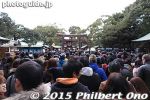
New Year's Day at Meiji Shrine. A total of 3 million people give New Year's prayers (Hatsumode) at Meiji Shrine. Japan's most popular shrine during New Year's.
|
|
|
|
|
|
|
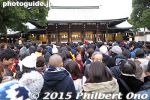
Meiji Shrine on New Year's Day
|
|
|
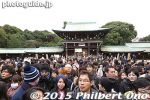
People behind me on New Year's Day at Meiji Shrine.
|
|
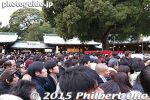
People on my left on New Year's Day at Meiji Shrine.
|
|
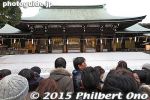
Main worship hall in front and a large offering pit where you throw money, etc.
|
|
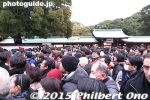
People on my right on New Year's Day at Meiji Shrine.
|
|
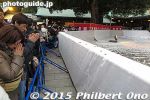
People pray in front of the money/offertory pit.
|
|
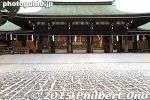
Money in the offertory pit on New Year's Day at Meiji Shrine.
|
|
|

In the past, police were hired to guard the money pit at Meiji Shrine. They also wore these face protectors to deflect the coins that fall short of the pit.
|
|

Lots of coins that fell short of Meiji Shrine's money pit. People no longer throw money from so far away. They wait until they get to the front.
|
|
|
|

Crowd control and Meiji Shrine.
|
|
|
|
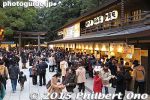
Buying amulets.
|
|
|
|
|

Bunkakan museum
|
|

Cafe and restaurant
|
|
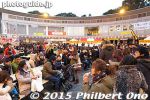
Cafe and restaurant on New Year's.
|
|

Phone booth
|
|
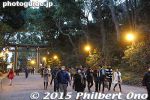
Path back to exit to Harajuku Station.
|
|
|
|
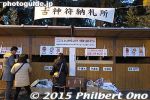
Throw away old New Year's decorations here.
|
|

Spring festival in early May.
|
|

Meiji Shrine's torii.
|
|

Sacred dances performed on stage at Meiji Shrine for their spring festival.
|
|
|
|
|
|
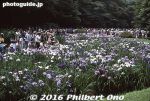
In June, iris garden at Meiji Shrine.
|
|
|

On Nov. 3, 2016, went to see Meiji Shrine's annual Autumn Grand Festival (秋の大祭). Nov. 3 is a national holiday called "Culture Day." It's also the late Emperor Meiji's birthday and originally a national holiday for his birthday.
|
|

About the Meiji Shrine's annual Autumn Grand Festival (秋の大祭).
|
|

Entertainment stage on the way to Meiji Shrine.
|
|

A small stage was setup along the main path to Meiji Shrine for traditional performances.
|
|

Sanbaso dancer
|
|

Sanbaso dancer (三番叟) who prays for abundant harvests. Featured in Noh and kabuki as well.
|
|
|
|
|
|
|

Chrysanthemum exhibits on the main path to Meiji Shrine.
|
|

Chrysanthemum exhibits on the main path to Meiji Shrine.
|
|

Chrysanthemum exhibits on the main path to Meiji Shrine.
|
|
|
|
|

Meiji Shrine's spanking new torii.
|
|
|
|

The shrine was undergoing major renovations, especially the roof.
|
|
|
|
|
|

Diplomat cars for foreign ambassadors attending the yabusame horseback archery at Meiji Shrine on Nov. 3.
|
|

Aikido demonstrations
|
|
|

Good thing the weather was good. In fact, Nov. 3 in Japan has a fantastic record for fine weather. It rained on this day only twice or so in the past few decades.
|
|

The main event was yabusame horseback archery.
|
|

Huge crowd. Need to get here early to get a good viewing spot.
|
|

Yabusame is one of Japan's hallmark traditional arts and commonly staged for visiting heads of state at Meiji Shrine.Former US president Ulysses Grant saw it with Emperor Meiji at Ueno Park in 1879, Ronald Reagan in 1983 at Meiji Shrine, George W. Bush (with PM Koizumi) at Meiji Shrine in 2001, and Obama (with Caroline Kennedy) at Meiji Shrine in 2014.
|
|
|
|
|
|
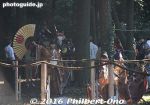
At the start of the horse track, the fan bearer (扇方 ogikata) uses a large fan to signal that the track is clear for the next archer to run.
|
|

It takes about 20 sec. for the horse to complete the run. It's very difficult for the archer to hit all three targets in a single run, but someone usually does it.
|
|

These archers belong to the Takeda School of mounted archery. They are based in Miura, Kanagawa where they practice almost weekly. They have about 60 members.
|
|
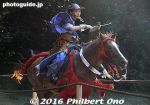
Delighted to see a few women archers too.
|
|

Delighted to see a few women archers at Meiji Shrine yabusame horseback archery on Nov. 3.
|
|

Yabusame is a centuries-old Shinto ceremony to pray for peace in the land and rich harvests. The mounted archery is preceded by a Shinto prayer ceremony. It originated with samurai who had to be skillful mounted archers in medieval battles before guns were introduced.
|
|

There's a 210-meter straight horse track within the shrine's spacious grounds. The track has three targets and each horseback archer gallops at full speed and tries to hit each target with an arrow.
|
|

After all the archers complete their runs, they trot back to the starting point and receive their shot arrows along the way. Each archer's arrows have a unique arrow tip (shape and/or color) so they know which is theirs.They do a few runs and the event lasts for about 2 hours.
|
|

Besides the costumes, the saddles and stirrups are very different from western ones.
|
|
|
|
|
|

Her arm guard bears her family crest and the sleeve's cuff has a dragonfly that is an auspicious symbol for courage and never retreating or running away. (Dragonflies don't fly backwards.)
|
|
|
|

The archer shoots at the first target. The second target is in the middle of the track and the third is toward the end of the track.
|
|

This is Matayoshi Akemi (又吉あけ美). Her long, black hair made her stand out as "A woman archer!" as many exclaimed. They had seven horses that are specially trained for yabusame. Each one has a name. The arrows have blunt wooden tips.
|
|

First they used square wooden targets and then these small targets made of ceramic dishes.
|
|

Yabusame is much more impressive when you see it in person. The costumes, the speed, and the excitement of seeing the archer hitting the target is just so impressive.
|
|
|
|
|
|
|
|
|

Her formal yabusame kimono (yoroi hitatare 鎧直垂) is light blue. Her left side is covered with a black arm guard (igote 射籠手) to make it easier to shoot the arrow. On her left side, she also wears a tachi sword and the shorter dagger (maezashi 前差し). Right above her forearm, you can see a coil of spare bow string (tsurumaki 弦巻).
|
|
|
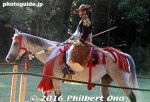
On her legs is a summer pelt of deer fur (muka-baki 行縢). It supposed to cushion any fall from the horse. Fortunately, no one fell off the horse this day.
|
|

When I saw yabusame at Meiji Shrine for the first time years ago, Mifune Toshiro (center) was still alive and he was there. I think he was the bugyo (master of the yabusame proceedings 奉行).Behind him, you can see a white tarp for VIPs. They were sitting in front of the second target. Many foreign diplomats are invited to this event and they sit here.
|
|
|
|

Actor Toshiro Mifune presides over the yabusame horseback archery at Meiji Shrine. The first and last time I saw this living legend in person. He was a student of the Takeda School of mounted archery and still has a close connection with the shrine.I think he donated something for the shrine's yabusame.
|
|

Actor Toshiro Mifune at Meiji Shrine.
|
|

Yoyogi-Koen Station platform on the Chiyoda Line subway has a nice leafy motif. This is the nearest station to Yoyogi Park.
|
|

Map of Yoyogi Park.
|
|

Yoyogi Park is one of the more popular parks for hanami flower-viewing picnics in late March-early April in Tokyo.
|
|

It's crowded under them trees, and pretty noisy.
|
|
|

Yoyogi Park's pond and fountain.
|
|
|
|
|

What impressed me the most about Yoyogi Park was not the cherry blossoms. It was the long lines of people waiting outside these log cabins.
|
|

Are they standing in line to buy tickets for an outdoor rock concert in the park?
|
|

No, they are standing in line to use the public toilets. Funny thing was the men's line was just as long as the women's line. But I'm sure the men's line progressed faster. It must've taken an hour to get to the toilet.
|
|

So before you do all that drinking, think about the toilet lines.
|
|
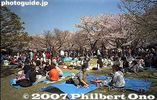
Yoyogi Park with huge crowds of flower viewers
|
|
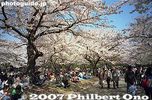
Yoyogi Park, Tokyo in spring
|
|
|
|
|
|

My gang enjoying the blossoms.
|
|
|

Cherry blossom pinickers from Hawaii at Yoyogi Park, Tokyo. They are playing the ukulele and dancing hula.
|
|
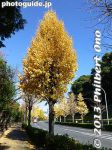
Gingko trees along the fringe of the park near Yoyogi Koen Station in autumn.
|
|
|
|
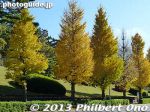
Gingko trees along the fringe of the park near Yoyogi Koen Station in autumn.
|
|
|
|
|
|
|
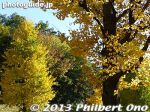
Gingko trees along the fringe of the park near Yoyogi Koen Station in autumn.
|
|
|
|
|
|










